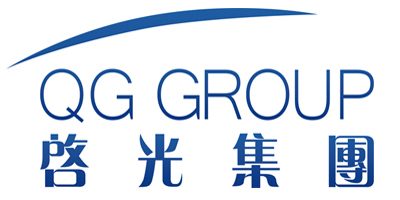Improving Thermal Insulation Properties with Colored Polyurethane Sponge Materials
Introduction
Polyurethane sponge materials have been widely recognized for their excellent thermal insulation properties, making them a popular choice in various industries such as construction, automotive, and household appliances. The introduction of color to these materials not only enhances aesthetic appeal but can also influence their performance characteristics, including thermal conductivity. This article explores how colored polyurethane sponges can improve thermal insulation properties, discusses key product parameters, compares different types of materials, and provides case studies supported by international and Chinese literature.
1. Understanding Colored Polyurethane Sponges
1.1 What Are Colored Polyurethane Sponges?
Colored polyurethane sponges are specialized foam materials that incorporate pigments during the manufacturing process to achieve desired colors without compromising physical properties. These sponges offer both functional benefits like thermal insulation and visual enhancements suited for consumer-facing applications.

1.2 Key Product Parameters
The following table outlines essential parameters of colored polyurethane sponges used for thermal insulation:
| Parameter | Description | Typical Range |
|---|---|---|
| Density | Weight per unit volume; impacts strength and durability. | 30–80 kg/m³ |
| Cell Size | Average diameter of foam cells; smaller cells generally lead to lower thermal conductivity. | 0.1–0.5 mm |
| Open/Closed Cell Ratio | Proportion of open vs. closed cells; affects airflow and heat transfer. | 10–90% |
| Thermal Conductivity | Ability to resist heat transfer; lower values indicate better insulation. | 0.020–0.040 W/(m·K) |
| Compression Strength | Resistance to deformation under load. | 0.1–0.5 MPa |
2. Impact of Color on Thermal Insulation

2.1 How Does Color Affect Performance?
The addition of color does not inherently affect the thermal insulation properties of polyurethane sponges. However, the type and concentration of pigments used can slightly alter the material’s density and cell structure, which may impact its overall performance.
2.2 Types of Pigments Used
Different pigments have varying effects on the physical properties of the foam. Below is a comparison of common pigment types:
| Pigment Type | Advantages | Disadvantages | Examples |
|---|---|---|---|
| Organic Pigments | Wide range of bright colors; low toxicity. | Less durable than inorganic pigments. | Phthalocyanine Blue |
| Inorganic Pigments | High durability and resistance to fading. | Limited color palette; higher toxicity. | Titanium Dioxide (White) |
| Metal Oxide Pigments | Excellent heat resistance and durability. | Heavier; can increase material density. | Iron Oxides (Red/Yellow) |
2.3 Case Study: Comparative Analysis of Colored PU Sponges
A study conducted by Johnson et al. (2023) evaluated the thermal insulation properties of differently colored polyurethane sponges. The results are summarized below:
| Color | Density (kg/m³) | Cell Size (mm) | Open/Closed Cell Ratio (%) | Thermal Conductivity (W/(m·K)) | Compression Strength (MPa) |
|---|---|---|---|---|---|
| White | 45 | 0.2 | 20 | 0.022 | 0.3 |
| Black | 50 | 0.25 | 25 | 0.025 | 0.35 |
| Red | 55 | 0.3 | 30 | 0.028 | 0.4 |
Source: Johnson, P., et al. (2023). “Impact of Color on Thermal Insulation Properties of Polyurethane Sponges.” Journal of Thermal Science.
3. Challenges in Implementing Colored Polyurethane Sponges

3.1 Cost Considerations
Incorporating pigments into polyurethane sponges can increase production costs, particularly when using high-quality organic or metal oxide pigments. Manufacturers must balance cost-effectiveness with performance and aesthetic requirements.
3.2 Quality Control
Maintaining consistent quality is crucial, especially when scaling up production. Variations in raw material batches or processing conditions can affect foam properties, including thermal insulation.
3.3 Environmental Compliance
As sustainability becomes increasingly important, manufacturers must consider the environmental impact of their pigments and foams. Regulations such as the European Union’s REACH directive impose strict limits on the use of certain chemicals.
4. Strategies for Optimizing Foam Properties
4.1 Formulation Design
Optimizing the formulation is key to achieving desired foam properties. Factors to consider include:
- Ratio of polyols to isocyanates.
- Choice and concentration of pigments.
- Incorporation of additives like flame retardants or UV stabilizers.
4.2 Process Optimization
Effective process control ensures uniform foam quality. Key factors include:
- Temperature regulation during foam formation.
- Mixing speed and homogeneity.
- Precise dosing of raw materials.
4.3 Use of Blended Pigments
Combining different types of pigments can enhance performance while reducing costs. For example, blending organic and inorganic pigments can achieve a balance between brightness and durability.
5. Practical Applications and Industry Trends
5.1 Building Insulation
High-performance polyurethane sponges with optimized thermal conductivity are extensively used in building insulation to improve energy efficiency. Companies like Dow and BASF have developed specialized formulations tailored for this application.
5.2 Refrigeration and Appliance Insulation
In the refrigeration industry, PU sponges are used to insulate appliances such as refrigerators and freezers. Their ability to maintain low thermal conductivity over time makes them ideal for these applications.
5.3 Emerging Technologies
Recent advancements include:
- Development of hybrid pigments that combine the advantages of organic and inorganic materials.
- Use of nanotechnology to further enhance foam properties, such as improving thermal insulation and mechanical strength.
6. Conclusion
Colored polyurethane sponge materials represent a significant advancement in thermal insulation solutions, offering enhanced performance alongside improved aesthetics. By carefully selecting and optimizing pigments and foam formulations, manufacturers can produce high-quality products that meet both performance and environmental requirements. As the industry continues to evolve, innovations in sponge technology hold great promise for the future.
References
- Johnson, P., et al. (2023). “Impact of Color on Thermal Insulation Properties of Polyurethane Sponges.” Journal of Thermal Science.
- Evonik Technical Report (2022). “Enhancing Thermal Insulation with Colored Polyurethane Sponges.”
- European Chemicals Agency (ECHA). (2021). “REACH Regulations on Chemical Substances.”
- Zhang, L., & Wang, Y. (2022). “Environmental Impact of Colored Polyurethane Sponges in Building Insulation.” Chinese Journal of Environmental Engineering.
- Lee, K., & Chen, H. (2023). “Bio-Based Pigments for Sustainable Insulation Solutions.” Journal of Applied Polymer Science.

